The Plinius Reference M-10 Dual Mono Preamplifier by Terry London
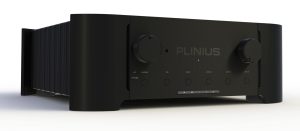
 I have enjoyed owning or reviewing some of the most highly regarded tube-based or solid-state preamplifiers in the last twenty years. The following list is composed of the preamplifiers that I have had extensive experience with: Concert Fidelity, Mark Levinson, Pass Labs, Conrad Johnson, Aric Audio, Audio Research, VAC, Audio Valve, Shindo Labs, Modwright, Nagra, D’Agostino, Linear Tube Audio, Backert Labs, and Triode Labs. I am sharing the above information to show that my perspective is grounded in exposure to many reference-level preamplifiers. That will give me credibility regarding what I will share about the phenomenal Plinius M-10 Dual Mono preamplifier, which retails for $20,000.
I have enjoyed owning or reviewing some of the most highly regarded tube-based or solid-state preamplifiers in the last twenty years. The following list is composed of the preamplifiers that I have had extensive experience with: Concert Fidelity, Mark Levinson, Pass Labs, Conrad Johnson, Aric Audio, Audio Research, VAC, Audio Valve, Shindo Labs, Modwright, Nagra, D’Agostino, Linear Tube Audio, Backert Labs, and Triode Labs. I am sharing the above information to show that my perspective is grounded in exposure to many reference-level preamplifiers. That will give me credibility regarding what I will share about the phenomenal Plinius M-10 Dual Mono preamplifier, which retails for $20,000.
Plinius Audio, which is located in New Zealand, has been manufacturing highly respected solid-state gear for over thirty years for performance and build quality. In 2015, Ralph Abramo became the official service person for U.S. customers of all Plinius equipment. Ralph is located in California. In 2019, he became the U.S. distributor. Before contacting Ralph, I had been told he had two impressive qualities. First, he was a terrific person who was highly respected, trusted, and liked by anyone doing business with him. Secondly, he was a master renovator and repair technician for all Plinius gear. Before the review of the M-10 dual mono preamplifier was set up, Ralph and I had an extensive conversation about the history of Plinius Audio. I shared that I had never owned a Plinius Audio amplifier, but every time I heard, almost twenty years ago, a series SA amplifier switched into pure Class A in other systems, I thought it was one of the most musical amplifiers I had ever heard. Ralph told me he was close to finishing a total rebuild of an SA-50 amplifier. The only aspect of the old stock amplifier was the chassis; everything internally was refurbished. Ralph asked me if I would be interested in purchasing the unit. I did, and it has turned out to be my favorite solid-state amplifier in my reference system!
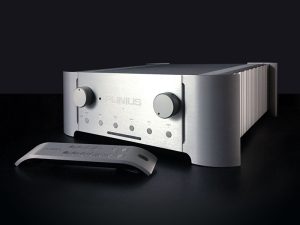
 The Plinius Audio reference M-10 dual mono preamplifier shipped to me for review was the all-black model (see top photo). It also comes in a silver version. The physical appearance of the M-10 was both bodacious and austere at the same time. The M-10 could be easily mistaken for a power amplifier because of its size (height 7 inches/width 20 inches/depth 19 inches) and weight of 35 pounds. The all-aluminum chassis, with its rounded corners and elegant fluted side panels, oozes high-quality craftsmanship. On the front of the M-10, two excellent knobs flank the elegant engraved Plinius badge. The left knob is the balance control. The right knob is the volume control.
The Plinius Audio reference M-10 dual mono preamplifier shipped to me for review was the all-black model (see top photo). It also comes in a silver version. The physical appearance of the M-10 was both bodacious and austere at the same time. The M-10 could be easily mistaken for a power amplifier because of its size (height 7 inches/width 20 inches/depth 19 inches) and weight of 35 pounds. The all-aluminum chassis, with its rounded corners and elegant fluted side panels, oozes high-quality craftsmanship. On the front of the M-10, two excellent knobs flank the elegant engraved Plinius badge. The left knob is the balance control. The right knob is the volume control.
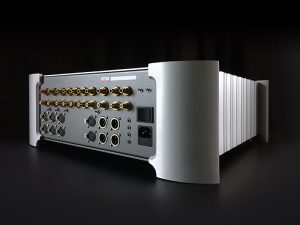
Underneath the extensive control knobs reside source selection buttons, source display LEDS, HT bypass LEDs, and phase LEDs. Around the back are six line inputs, and three are balanced XLRs. There is a switch that directs the signal either to the RCA or XLR inputs. There are a total of three RCA outputs that can be switched to two balanced XLRs. Next is the HT bypass input, which is followed by a grounding lift switch. The main switch on/off is located just above the IEC connector. There is one more feature located on the back panel, which is the switch for adjusting the output gain. I wish more preamplifiers had this adjustable gain feature that would allow you to drive your power amplifier optimally with the least residual noise. The M-10 is a dual mono configuration that is a fully discrete design. There are no integrated circuits in the signal path. An important goal for the Plinius design team was to keep noise to the lowest levels possible and extremely low distortion levels. I would refer you to their website for information on the internal parts and specifications of the M-10. I would be remiss if I did not share information on the M-10’s remote control. It is constructed out of thick aluminum and has excellent ergonomics. Starting with the precision of the volume control, any feature can be easily found and adjusted on the large remote, such as phase, mute, source selection, HT bypass, display, and standby. It’s the easiest and most useful remote control I have ever used in my system.
 The first great virtue of the Plinius M-10 preamplifier was on display when I put on the jazz guitarist Thom Rotella’s album “Side Hustle,” which offers powerful dynamics, extended taut bass pedal notes from a Hammond B-3 organ, all recorded with great clarity. The M-10 had one of the highest “jump factors” based on its blazing transient speed. This sense of aliveness brought the performance of my system to a more realistic experience than you find in live music. Part of this experience is the M-10 preamplifier’s impressive dynamic range. How it would scale from the softest parts of this jazz combo’s music to the full-blown crescendos was effortlessly communicated into my acoustic space.
The first great virtue of the Plinius M-10 preamplifier was on display when I put on the jazz guitarist Thom Rotella’s album “Side Hustle,” which offers powerful dynamics, extended taut bass pedal notes from a Hammond B-3 organ, all recorded with great clarity. The M-10 had one of the highest “jump factors” based on its blazing transient speed. This sense of aliveness brought the performance of my system to a more realistic experience than you find in live music. Part of this experience is the M-10 preamplifier’s impressive dynamic range. How it would scale from the softest parts of this jazz combo’s music to the full-blown crescendos was effortlessly communicated into my acoustic space.
A relatively new album by the jazz bassist Rodney Whitaker, “All Too Soon / The Music of Duke  Ellington,” is a great test disc to measure a preamplifier’s ability in spatiality. Such sonic attributes include individual image palpability, sound-stage depth and dimensionality, air/space between individual players, layering of the musicians in their acoustic space, and the ambient cues/reflection of where the music was recorded. The solid-state M-10 preamplifier came the closest to replicating, in my experience, what excellent tube-based preamplifiers have always offered. The M-10 rendered realistic “meat on the bones” imaging, a sense of air around and between instruments, and a sense of the music just oozing out of a three-dimensional space, which is not coming from your speakers. Another aspect of importance is how the preamplifier presents micro-details and the minutia of music. If reproduced correctly, these micro-details bring the listener closer to the emotional aspects of the performance. If done wrongly, it makes listening to music as if it’s under a microscope being dissected; the M-10 never went in that sonic direction. It allowed me to connect to the music in an engaging and relaxing manner.
Ellington,” is a great test disc to measure a preamplifier’s ability in spatiality. Such sonic attributes include individual image palpability, sound-stage depth and dimensionality, air/space between individual players, layering of the musicians in their acoustic space, and the ambient cues/reflection of where the music was recorded. The solid-state M-10 preamplifier came the closest to replicating, in my experience, what excellent tube-based preamplifiers have always offered. The M-10 rendered realistic “meat on the bones” imaging, a sense of air around and between instruments, and a sense of the music just oozing out of a three-dimensional space, which is not coming from your speakers. Another aspect of importance is how the preamplifier presents micro-details and the minutia of music. If reproduced correctly, these micro-details bring the listener closer to the emotional aspects of the performance. If done wrongly, it makes listening to music as if it’s under a microscope being dissected; the M-10 never went in that sonic direction. It allowed me to connect to the music in an engaging and relaxing manner.
 My last selection was Kenny Barron’s “Beyond This Place,” which made many of the best 2024 jazz album lists. Barron’s piano is beautifully recorded in terms of timbres, color, and tonality, and I wanted to see how the Plinius M-10 would handle this critical aspect of the music. Because of its remarkable clarity/transparency, the M-10 allowed the signal sources to fill in the colors. I used three different DACs that render tonality and color slightly differently, and I heard these tonal divergences with pristine clarity. My reference DAC is the Reimyo DAP-999EX Toku, which has a vivid, beautiful harmonic, and tonal presentation that the M-10 completely passed on.
My last selection was Kenny Barron’s “Beyond This Place,” which made many of the best 2024 jazz album lists. Barron’s piano is beautifully recorded in terms of timbres, color, and tonality, and I wanted to see how the Plinius M-10 would handle this critical aspect of the music. Because of its remarkable clarity/transparency, the M-10 allowed the signal sources to fill in the colors. I used three different DACs that render tonality and color slightly differently, and I heard these tonal divergences with pristine clarity. My reference DAC is the Reimyo DAP-999EX Toku, which has a vivid, beautiful harmonic, and tonal presentation that the M-10 completely passed on.
In the context of my systems, the Plinius reference dual mono M-10 preamplifier turned out to be one of the most exciting and engaging preamplifiers I have ever had in-house. Besides its impeccable build quality and many features not found on today’s reference level preamplifiers (balance control – phase control – adjustable gain output), the M-10 offers an exceptional level of rhythmic drive or “aliveness” rarely found even in high-quality preamplifiers, tightly focused expansive sound-staging, superior resolution and micro-details without ever sounding analytical/mechanical, and an effortless/engaging presentation rarely found in transistor-based preamplifiers. The Plinius M-10 is expensive, but I believe it ranks in the pantheon of the best preamplifiers today and is worth the cost of entry.


Specifications:
Price: $20,000 USA
Connectivity: 2 x Trigger Out, 1 x Trigger In, 1 x RC5 In
Frequency Response: 20Hz to 20kHz +/–0.1dB
Distortion: <0.001% THD+N
Inputs: 3 x XLR/RCA selectable, 3 x dedicated RCA, 1 x HT Bypass XLR/RCA selectable
Input Impedance: 7.5k ohms RCA/Unbalanced, 47k ohms XLR/Balanced
Pre-Out source Impedance: 10 ohms RCA/Unbalanced, 20 ohms XLR/Balanced
Outputs: 2 x XLR/RCA Pre-Out, 1 x RCA Line Out
MAX Output Level: 7V RMS RCA/Unbalanced, 14V RMS XLR/Balanced
Gain: High: 12dB (4x) Low: 0dB (1x)
Dimensions: Height: 170mm (6.75″)
Width: 510mm 20″)
Depth: 480mm (19″)
Weight: 16kg (35lbs)
Contact: Ralph Abramo
Plinius Audio Sales and Repair
Website: www.pliniusaudio.com
Email: “ralph@pliniusaudio.com”
TJ’s Associated Equipment
Source:
Pass Labs DAC-1
Reimyo DAP-999EX Toku DAC
Mark Levinson 31.5 transport
Pro-Ject reference CD transport & LTA power supply
Wadia 22 transport
CEC T-3 double belt transport
Amplification:
Coda 5.5 amplifier
SPL S1200 amplifier
Plinius SA-50 amplifier
Aric Audio Super SET 300B amplifier
Threshold 550e amplifier
SPL Elector preamplifier
Aric Audio Motherlode MKII preamplifier
Aric Audio Custom 12AX7 preamplifier
Loudspeakers:
Tekton Design Ulfberht
Rosso Fiorentino Arno 40
NSMT System Two
Music Design Knight One
Accessories:
Jena Labs Symphony XLR ICs
Jena Labs reference AES/EBU digital cable
Vermouth reference speaker cable
Krolo Design reference rack & footers
Puritan Audio power conditioner & grounding master system
Audio Archon power cords
4 thoughts on "The Plinius Reference M-10 Dual Mono Preamplifier by Terry London"
Leave a Reply
Stereo Times Masthead
Publisher/Founder
Clement Perry
Editor
Dave Thomas
Senior Editors
Frank Alles, Mike Girardi, Russell Lichter, Terry London, Moreno Mitchell, Paul Szabady, Bill Wells, Mike Wright, and Stephen Yan,
Current Contributors
David Abramson, Tim Barrall, Dave Allison, Ron Cook, Lewis Dardick, John Hoffman, Dan Secula, Don Shaulis, Greg Simmons, Eric Teh, Greg Voth, Richard Willie, Ed Van Winkle, Rob Dockery, Richard Doron, and Daveed Turek
Site Management Clement Perry
Ad Designer: Martin Perry


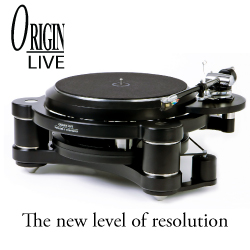


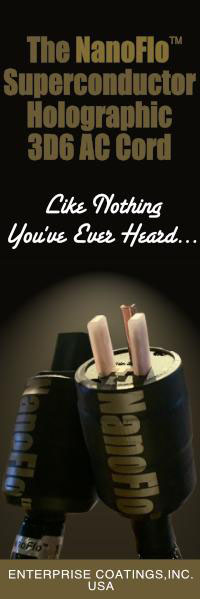
Hi Terry!
Excellent and very intriguing review! Can’t wait to hear the Plinius at some point. How would you say this preamp compares to the Coda 07x that you had for quite awhile and were so impressed with that you put it on your Most Wanted Components of the Decade list? I notice you didn’t mention the Coda at all in the list of preamps you’d had extensive experience with, so I’m very interested to know how the Plinius would compare with the Coda. Thanks in advance!
Hi Craig!
Funny, after reading Terry´s review I was about to ask the exact same question as you did 🙂
I bought a Coda Fet07x 2 years ago to match my Coda 15.0 power amp. It´s a wonderful combo!
Before 07x I used tubed preamps like the Leben RS-28CX.
I hope Terry give us his verdict on this!
Hi Terry!
Another comparison to Aric Audio Motherlode MKII preamp please ;-).
It is always a dilemma between tube or SS preamp. For some the tube preamp is a “must”.
Thank’s.
Thank you Terry for the detailed review. I have the RA150 and RM10 and find that Plinius is underrated in the audiophile community. Sound is amazing and what you’d expect from the top of the line Plinius.